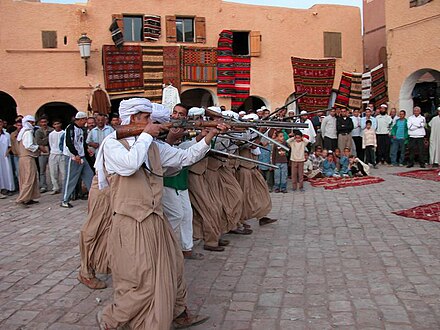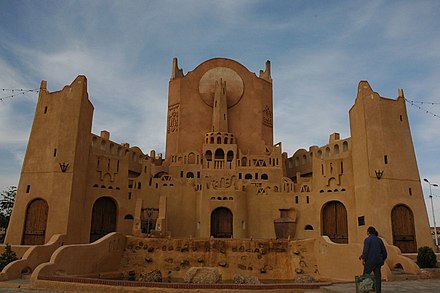M'zab - valley in Algeria
M'zab is a limestone plateau in Saharan Algeria and a UNESCO World Heritage Site. Its collection of desert fortress-cities is exotic to the point of surrealism.
Understand

The M'Zab Valley is a deep, desert valley dotted with five walled cities from the 11th century. Although each one is independent of the other, Ghardaïa is often used to refer to all five collectively. Each town sits on top of a rocky outcrop, with the surrounding sandstone houses leading up to a tall minaret that doubled as a watchtower. The architecture of the cities is of a Libyan-Berber style. The old town centres often contain large, fortress-like mosques and public buildings, with narrow lanes weaving down the hill to the walls. These cities sit within an oasis filled with palm and fruit trees, where locals would traditionally dwell in the hot summer. The locals have retained much of their tradition and customs, and travellers will be able to recognise this while visiting the area.
Cities
M'zab is made up of five separate "cities," which essentially serve as separate urban centers of one large "Pentapolis," home to over 350,000 people.
- Beni Isguen
- Bounoura
- El-Ateuf
- Ghardaïa — the largest city of the valley, with a population over 100,000.
- Melika — a small and less remarkable center, but one that offers the best views of both Ghardaia and Bounoura.
Outside the Pentapolis of the valley, there are two other Mozabite oasis towns far to the north:
- Guerrara
- Bérianne
Get in

It is possible to fly into Ghardaia from Algiers as Air Algerie has a few flights every week. There are also flights from and to Constantine, Bechar, Illizi, Oran and Tamanrasset. There are also buses coming into Ghardaia from Algiers and Setif (9 hours). There are also buses coming in from In-Salah and Adrar/Timimoun. There is also a bus from Biskra (7-9 hours, 960 dinar).
Get around
See

Do
Buy

Eat
Drink
Sleep
- Hotel Atlandid. The rooms include a bathroom with hot water, air conditioning, and some rooms even have a terrace. No wi-fi as of November 2013. 2200DA for two beds
- Hotel El Kantara.
- Aghlen Paradise, 32.43091°, 3.61407°, +213 773 24 93 80, residence.aghlenparadise@yahoo.com. A retreat on the outskirts of Ghardaia. Not very expensivewith a nice and helpful manager. 5000-10000 dinar for double room (depending on quality)
- Hotel l'Oasis, 32.49375°, 3.68589°. A quiet hotel with a garden, clean rooms with toilet and shower, friendly staff, breakfast included. approx. 4000 DA for one person
Go next
Ghardaia is well-connected with buses headed to different parts of the country.
- Algiers — 10 hours
- El Goléa — 3.5 hours. 400DA
- In Salah — 10 hours
- Ourgla — 3 hours
- Sétif — 9 hours. 950DA
- Timimoun — 7 hours. 900DA
Related: UNESCO World Heritage List
Ghardaia
Primary administrative division